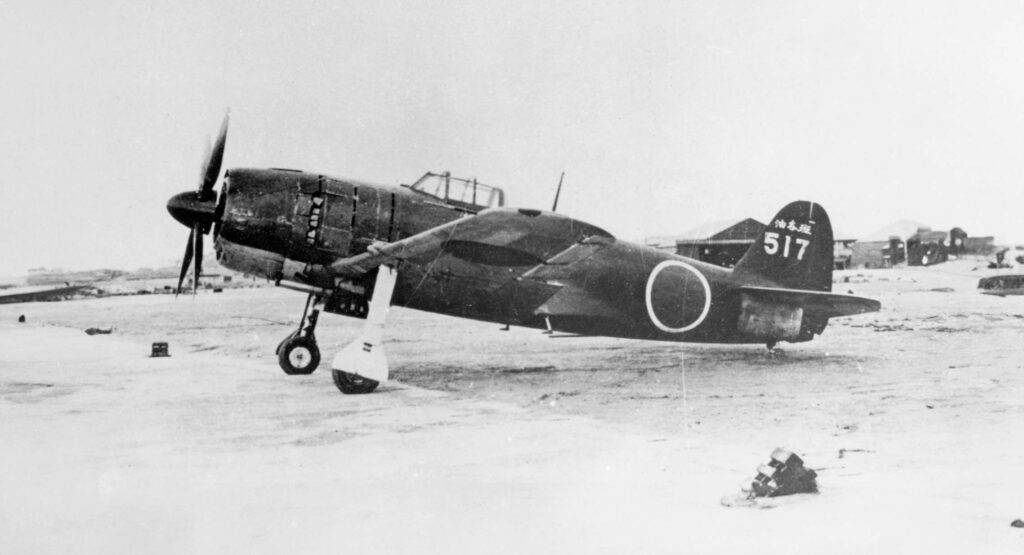The Kawanishi N1K-J, a formidable WWII Japanese fighter aircraft, known for its exceptional maneuverability and strong armament, initially a floatplane.
The Kawanishi N1K-J was a prominent fighter aircraft used by the Imperial Japanese Navy during World War II. Initially designed as a floatplane, it was later developed into a land-based fighter. Renowned for its agility and firepower, the N1K-J played a significant role in the Pacific War. This article aims to delve into the development, design, operational capabilities, and combat history of the N1K-J.
History of the Development of the Kawanishi N1K-J
During the late 1930s and early 1940s, the Imperial Japanese Navy sought to enhance its aerial capabilities, especially in terms of fighters that could operate in the vast Pacific region. The Kawanishi N1K-J was developed by Kawanishi Aircraft Company, initially as a floatplane (N1K1 Kyofu) for operations from island bases. The project was led by designer Toshihara Baba.
The N1K-J, a land-based adaptation, emerged due to the need for a high-performance fighter that could compete with advancing Allied aircraft. The N1K-J first flew in December 1942. Its development was a response to the evolving air warfare dynamics and the strategic needs of Japan’s naval air forces.
Its development was characterized by the challenges of Japan’s unique geographic and strategic situation.
Design of the Kawanishi N1K-J
The N1K-J’s design was advanced for its time, initially based on its predecessor floatplane. The aircraft was equipped with a powerful Nakajima NK9 Homare engine, providing high power output. It had a length of 9.35 meters and a wingspan of 12.00 meters.
Its design included innovations such as automatic combat flaps, which improved maneuverability. The aircraft was heavily armed with cannons, making it a formidable adversary in dogfights. The N1K-J also had a robust airframe capable of withstanding significant battle damage.
The main drawbacks were its relatively high production complexity and maintenance requirements. Nevertheless, its performance advantages made it one of the most capable Japanese fighters of the era.

Performance of the Kawanishi N1K-J
The N1K-J’s performance was exceptional. It could reach a top speed of about 580 km/h (360 mph) and had a service ceiling of 10,000 meters (32,800 feet). Its range was approximately 1,998 kilometers (1,242 miles), sufficient for various combat missions.
Compared to contemporaries like the American F6F Hellcat or the F4U Corsair, the N1K-J was highly competitive, offering superior maneuverability and comparable speed. Its heavy armament also gave it an edge in dogfights.
Military Use and Combat of the Kawanishi N1K-J
The N1K-J was primarily armed with four 20mm cannons and could carry bombs for ground-attack missions. It saw extensive use in the latter part of the Pacific War, particularly in the Philippines and Okinawa campaigns.
The N1K-J excelled in air-to-air combat, engaging effectively with Allied aircraft. It was less effective as a bomber escort due to its limited range but proved formidable in defending against bomber raids.
The N1K-J was exclusively used by the Imperial Japanese Navy and was not exported. Post-war, the rapid advancement in jet technology rendered piston-engined fighters obsolete, leading to the N1K-J’s retirement.
The Kawanishi N1K-J remains a remarkable example of Japanese aircraft design during World War II, showcasing advanced engineering and combat capabilities. Its development and operational use reflect the challenges and strategic imperatives faced by Japan in the Pacific War. The N1K-J’s legacy is characterized by its status as one of the finest fighters fielded by Japan, illustrating the pinnacle of Japanese piston-engined fighter development.
Back to the Warbirds section.